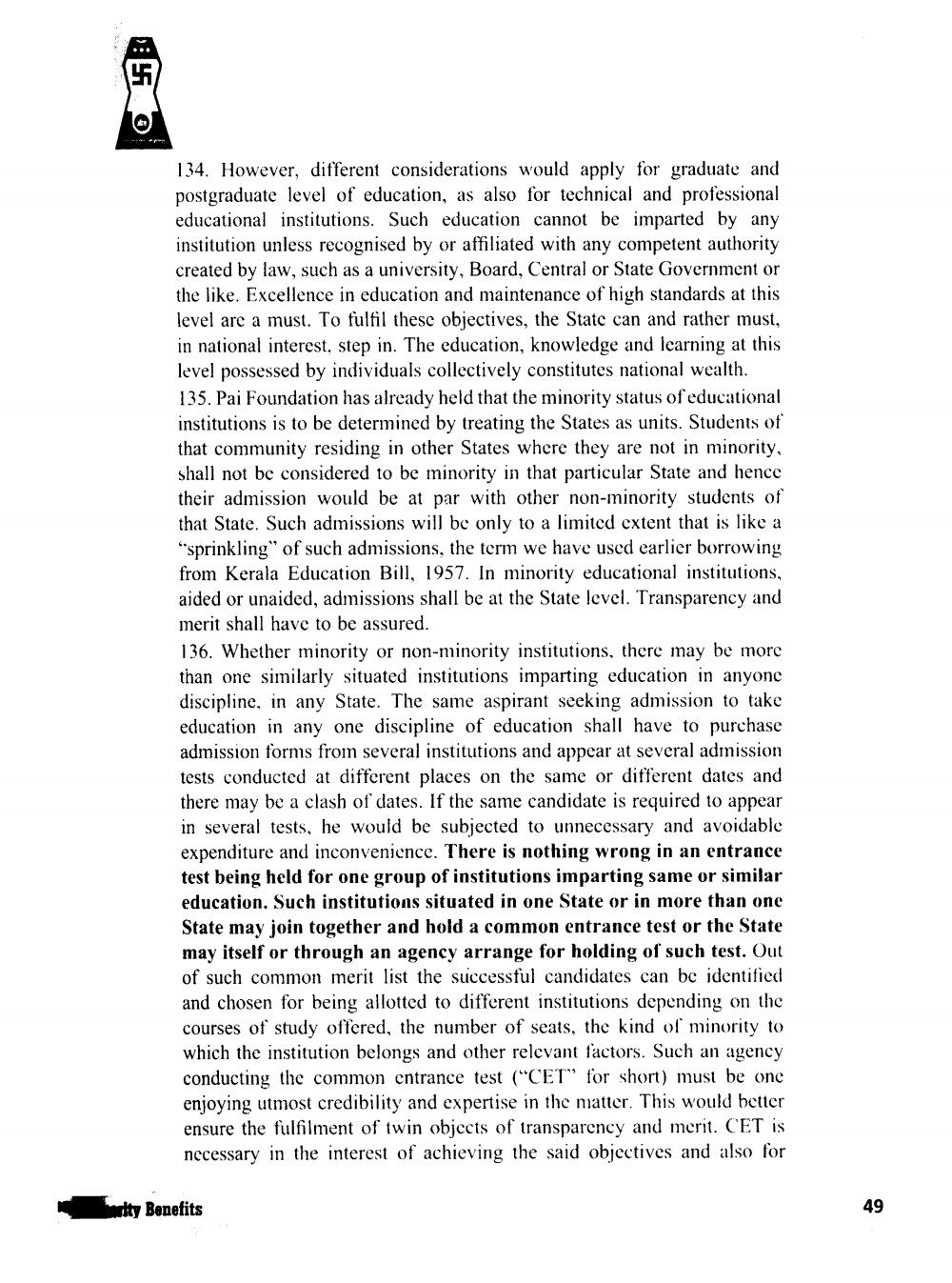________________
第15
134. However, different considerations would apply for graduate and postgraduate level of education, as also for technical and professional educational institutions. Such education cannot be imparted by any institution unless recognised by or affiliated with any competent authority created by law, such as a university, Board, Central or State Government or the like. Excellence in education and maintenance of high standards at this level are a must. To fulfil these objectives, the State can and rather must, in national interest, step in. The education, knowledge and learning at this level possessed by individuals collectively constitutes national wealth. 135. Pai Foundation has already held that the minority status of educational institutions is to be determined by treating the States as units. Students of that community residing in other States where they are not in minority, shall not be considered to be minority in that particular State and hence their admission would be at par with other non-minority students of that State. Such admissions will be only to a limited extent that is like a "sprinkling" of such admissions, the term we have used earlier borrowing from Kerala Education Bill, 1957. In minority educational institutions. aided or unaided, admissions shall be at the State level. Transparency and merit shall have to be assured.
136. Whether minority or non-minority institutions, there may be more than one similarly situated institutions imparting education in anyone discipline, in any State. The same aspirant seeking admission to take education in any one discipline of education shall have to purchase admission forms from several institutions and appear at several admission tests conducted at different places on the same or different dates and there may be a clash of dates. If the same candidate is required to appear in several tests, he would be subjected to unnecessary and avoidable expenditure and inconvenience. There is nothing wrong in an entrance test being held for one group of institutions imparting same or similar education. Such institutions situated in one State or in more than one State may join together and hold a common entrance test or the State may itself or through an agency arrange for holding of such test. Out of such common merit list the successful candidates can be identified and chosen for being allotted to different institutions depending on the courses of study offered, the number of seats, the kind of minority to which the institution belongs and other relevant factors. Such an agency conducting the common entrance test ("CET" for short) must be one enjoying utmost credibility and expertise in the matter. This would better ensure the fulfilment of twin objects of transparency and merit. CET is necessary in the interest of achieving the said objectives and also for
erity Benefits
49




